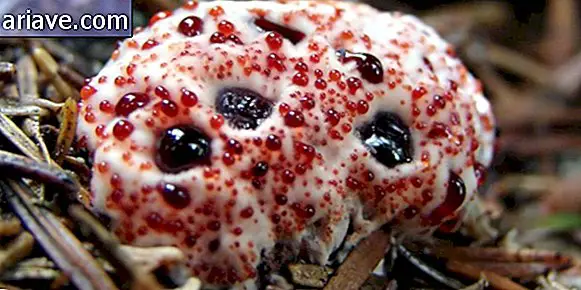Little Turtle Handbook: 13 Amazing Facts and 9 Different Species
Serious question: have you ever been watching a turtle for a while, looking at how it walks, how it hides in its shell, how it feeds? The truth is that these animals are fascinating, especially if you're the type who likes to watch these little creatures with a curious look. Here are some interesting facts about them:
1 - Turtles are solitary creatures. Mom Turtle protects her little children for a short time. Then it is each one for himself;
2 - Soldiers of Ancient Rome were inspired by turtles to create a kind of shield for several soldiers at the same time. They stood in line and each held his share of the great shield, so everyone was protected.
3 - Turtles have exoskeleton and internal skeleton. Chances are you never noticed, but these animals have ribs, collarbones and spines inside the shell.

4 - Warm-spotted turtles have lighter-colored shells than those that live in cold regions.
5 - Even if a turtle is not a sea turtle, it will have the ability to hold its breath for a long time, you know? They need to empty their lungs before hiding in their hooves, so you can hear them breathing quickly when they want to protect themselves.
6 - Turtle shells have nerve endings and are therefore sensitive to touch. This means that these animals are capable of tickling and scratching, for example. There are even turtles who like to get a cuddle on the shell.
7 - The African Spurred Tortoise is one of the largest and can live for over 100 years and weigh around 90 kg!

8 - Charles Darwin adopted a tortoise, which he called Harriet, in 1835. Years later she ended up at an Australian zoo, where she only died in 2006.
9 - Male turtles have the most curved chest / belly region, while in females the area is flat. Males also have longer tails and are larger than females.
Turtles can extract nutrients and water even through tiny bites. The digestive system of these animals separates the water and reserves the rest for when water is scarce.

11 - The smell comes to the turtles by the throat, so if you find a turtle walking with its mouth open, know that it is just trying to smell the environment.
12 - In 1968 a tortoise was sent into space by a team of Russian astronomers. The ship was the first to circle the moon and return to Earth safely. The turtle on board lost 10% of its body weight during the trip, but returned in good condition.
13 - A 2006 test found that turtles are smarter than mice when placed in mazes to find food. Unlike mice, turtles do not go the same way more than once. Another more recent study found that turtles often learn tactics from other animals just by watching them.
Here's a look at some unfamiliar turtle species:
1 - Carettochelys insculpta

Also known as a pig nose turtle, this freshwater turtle is found in regions of Australia and New Guinea. Unfortunately the species has had a 50% decline in its population in the last 20 years. The species is known to exhibit aggressive behavior when in captivity.
2 - Sub - flat Dogania

Another freshwater turtle, the Dogania subplana feeds primarily on snails and other small mollusks. This turtle can easily be mistaken for a fish; first by appearance, second by the fact that its hull is neither too rigid nor too apparent.
3 - Graptemys flavimaculata

This pet's nickname is a map turtle, and it is extremely rare and can only be found on the Pascagoula River in Mississippi. The species faces reproduction problems due to the small number of representatives and the presence of the largest predators: the crows.
4 - Macrochelys temminckii

This is the largest freshwater turtle in the world - it can weigh up to 70 kg! They are animals found only in the southeastern US. Their mouth has a different shape, and to attract their prey, these turtles use an attachment that is on the tip of the tongue, which looks like a worm. They feed on fish, snakes, seabirds and even other turtles.
5 - Lissemys punctata

This turtle has so many folds on its skin that its paws end up disappearing when it collapses into the shell - it keeps it protected when the weather is very dry. Its diet includes frogs, fish, flowers and fruits.
6 - Geochelone sulcata

This turtle's front paws are full of thorns, and that's why it already becomes a curious animal, isn't it? Want to see one up close? So stop by in the Sahara desert where they live. By the way, we are talking about the third largest tortoise in the world, which can measure up to one meter long and live for up to 150 years.
7 - Singer Pelochelys

Ever wondered what bizarre to find a tortoise nearly six feet long? For if you come across the goodness of the photo above, this is quite possible. This species spends 95% of its life buried in sand or mud, on the banks of freshwater rivers, waiting for the prey it attacks when they get close. She comes out once or twice a day to breathe.
8 - Astrochelys radiata

This tortoise, which is native to Madagascar, is terribly endangered by hunting, especially by people who keep it captive. The oldest tortoise of the species died at 188 years!
9 - Chelodina mccordi

This long-necked turtle is also threatened with extinction, mainly because it is chosen as a pet. They are found only on the island of Rote, Indonesia, where poaching is a constant practice, unfortunately.











